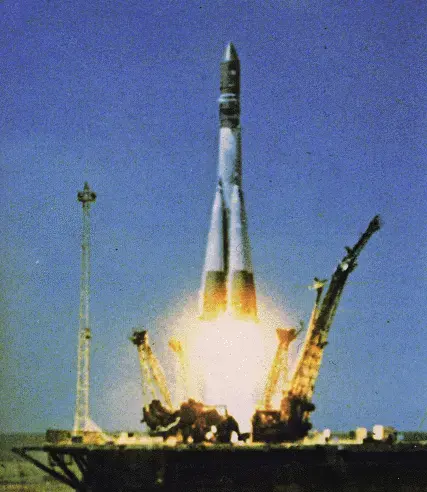Elektron 3 & 4
Launch Success
Liftoff Time (GMT)
21:51:02
Friday July 10, 1964
Mission Details
Launch Notes
Last flight of the Vostok (sometimes called Vostok-1) rocket.
Elektron 3
Elektron was one of the earliest Soviet scientific satellite missions to be authorized following the initial Sputnik (D-1) series. The spacecraft had the specific task of mapping the Van Allen radiation belts at higher inclinations than that achieved by US satellites of the time (60 degrees vs 30 degrees latitude). The Elektron missions consisted of two different satellites in each pair. Elektron 1 and 3 were used for the lower orbit, while Elektron 2 and 4 were boosted to a higher orbit. Decrees authorizing design and building of the Elektrons were issued on 9 May 1960 and 13 May 1961. Design work began in July 1960. Elektron 1 and 3 were 325 mm in diameter and was designed to be placed in a 425 km × 6,000 km orbit and map the inner Van Allen belt, simultaneous with Elektron 2 and 4's study of the outer radiation belt. The spacecraft also measured cosmic rays and the upper atmosphere.
Low Earth Orbit
1 Payload
350 kilograms
Elektron 4
Elektron was one of the earliest Soviet scientific satellite missions to be authorized following the initial Sputnik (D-1) series. The spacecraft had the specific task of mapping the Van Allen radiation belts at higher inclinations than that achieved by US satellites of the time (60 degrees vs 30 degrees latitude). The Elektron missions consisted of two different satellites in each pair. Elektron 1 and 3 were used for the lower orbit, while Elektron 2 and 4 were boosted to a higher orbit. Decrees authorizing design and building of the Elektrons were issued on 9 May 1960 and 13 May 1961. Design work began in July 1960. Elektron 2 and 4 were boosted into a high 450 × 60,000 km orbit to map the outer Van Allen belt, simultaneous with Elektron 1 and 3's study of the inner radiation belt. To attain this orbit it used a perigee kick motor - a solid rocket of 3350 kgf and 12 to 15 seconds duration. Elektron 2 and 4 were 400 mm in diameter and 850 mm long. The spacecraft also measured cosmic rays and the upper atmosphere.
Low Earth Orbit
1 Payload
445 kilograms
Launch Site
Stats
Vostok
26th
Mission
2nd
Mission of 1964
OKB-1
93rd
Mission
18th
Mission of 1964
1964
46th
Orbital launch attempt

